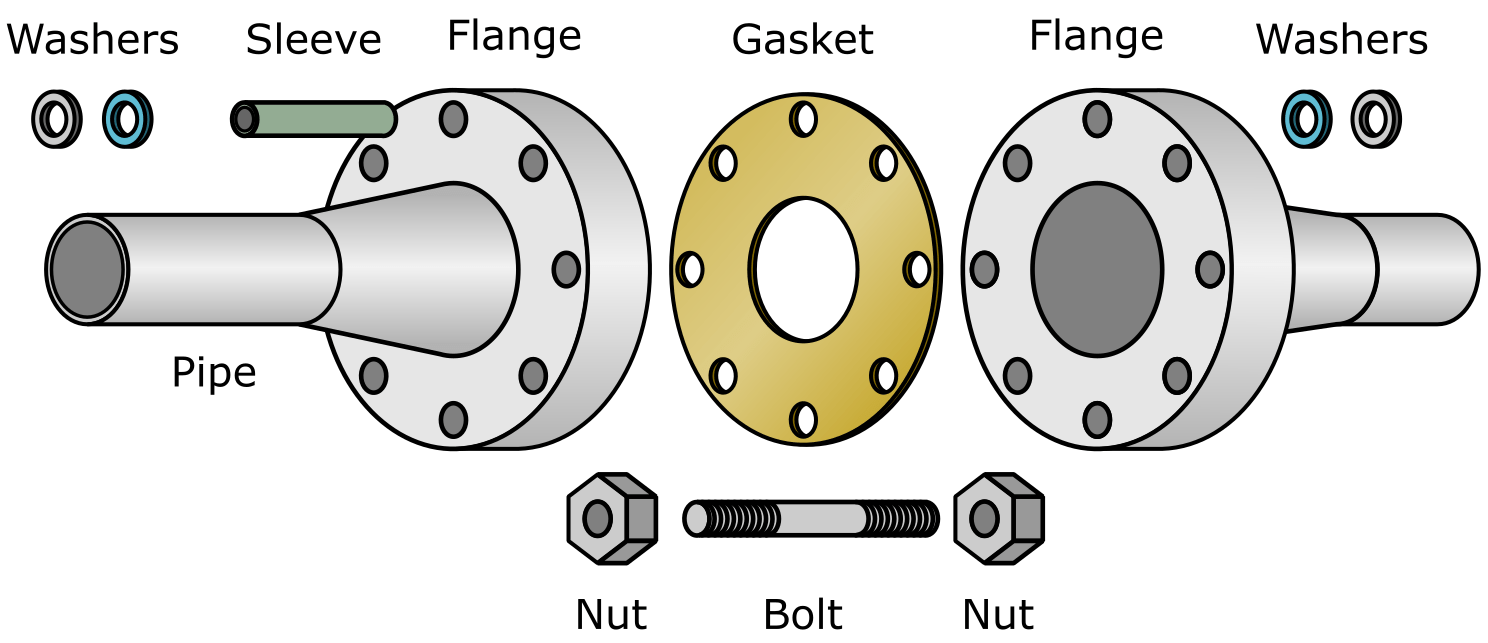Flange Material Selection
Flanges can be manufactured from many different materials. The construction material chosen depends upon the service conditions the flange is likely to encounter. Some important service condition factors are temperature, pressure, and corrosion rate.
Example 1
Some flange materials will not withstand high pressures, whilst others will not withstand high temperatures, so there is little point using these materials for e.g. high-pressure steam systems.
Example 2
Brass and bronze are copper alloys and thus have good corrosion resistance properties. For this reason, brass or bronze flanges may be a good choice for e.g. a seawater system, because seawater is corrosive, and copper-based alloys are corrosion resistant.
If a pipe is expected to operate in a moderate to high corrosive environment, it will receive a corrosion allowance (CA)1. The corrosion allowance is usually a 1/16, 1/8 or 1/4 of an inch (1.5, 3.0, 6mm, respectively), with the CA value indicating the additional thickness of a pipe’s wall. A pipe with an increased wall thickness can remain in service longer than a pipe with a thinner wall thickness; this is advantageous if extending the pipe’s service life makes its maintenance interval converge with the maintenance intervals of other components within the piping system i.e. all parts can be maintained during a single shutdown period.
Are you enjoying this article so far? Then be sure to check out our Flange Fundamentals Video Course. The course has over five hours of video content, a 52 page colour illustrated handbook (this article is an extract from the handbook), a quiz, and you will receive a certificate of completion when you finish the course. Enjoy!
Flange Materials
Carbon steel (CS) is the most common flange construction material used within the oil and gas industry, although the following flange materials are also commonly used:
- Cast iron.
- Nickel alloy.
- Stainless steel.
- Bronze.
- Brass.
- Aluminium.
- Synthetic Polymer based (plastics).
Mating flanges should be constructed from the same material, and this material should be of the same material as the pipes to which the flanges are mounted. Using dissimilar materials (materials that are not the same) is ill advised.
Different materials have different characteristics, so it is difficult to assess the reliability of a system if the components are manufactured from many different materials. In addition to this reliability problem, galvanic corrosion2 may occur if an electrolyte is present (water, seawater, etc.); flanges are sometimes electrically insulated3 to reduce the risk of galvanic corrosion.

Insulated Flange Assembly
The above image shows insulated washers and an insulated sleeve. These components are usually manufactured from some form of plastic, which reduces the voltage potential difference between the components, and thus drastically reduces the risk of galvanic corrosion. The insulating parts are installed between the dissimilar metals to prevent them making physical contact with each other. Note that the gasket itself may also form a large insulator between the two mating flange surfaces, although this depends upon the type of gasket used.
1Corrosion allowance is a very important factor when calculating stresses within a piping system.
2Galvanic corrosion occurs when two dissimilar metals are placed next to each other and electrically connected via an electrolyte.
3Insulators are usually manufactured from polymer-based materials (plastics, Teflon, etc.); insulators are used to prevent or reduce electrical current flow.
